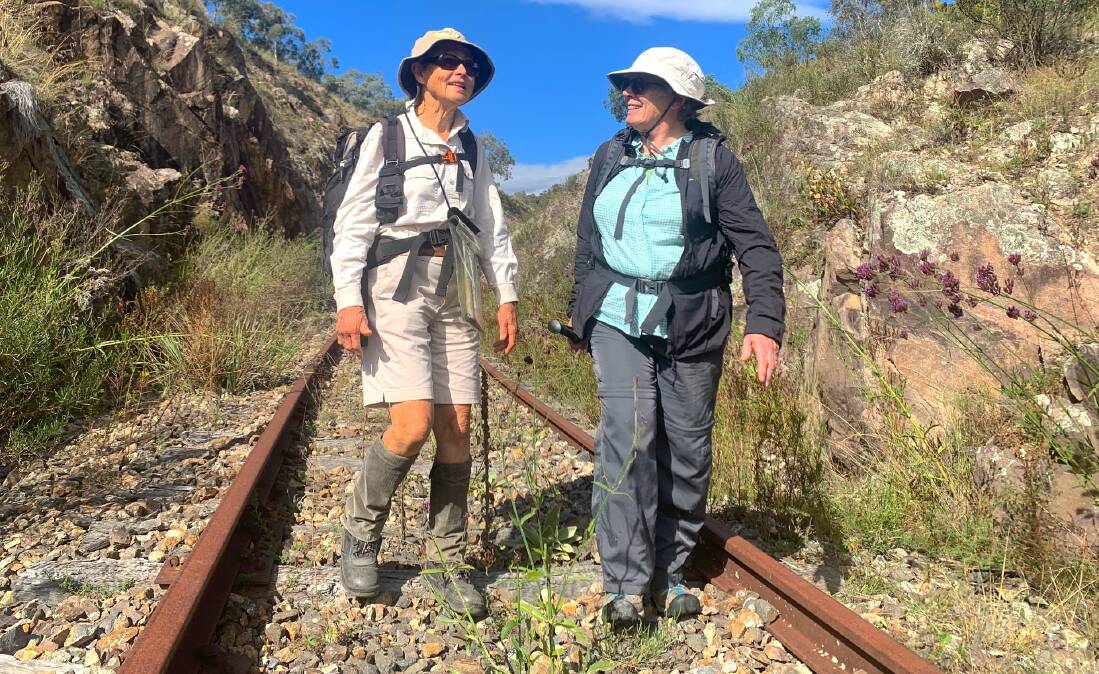
When I mentioned to a good friend that I was on my way to Tuggeranong Railway Station, he laughed at me. Heartily. "Mate, the light rail won't make it that far south for decades," he scoffed.
When I explained it was almost 50 years since the station was closed, he was even more bemused.
I am, of course, referring to the railway station (some call it a siding as it was predominantly for goods) that was built in the area known as Tuggeranong, almost a century before the first sod of dirt was turned in the suburban sprawl of the same name.
In fact, the station was opened way back in 1887, that's more than 20 years before Canberra was even founded as a city.
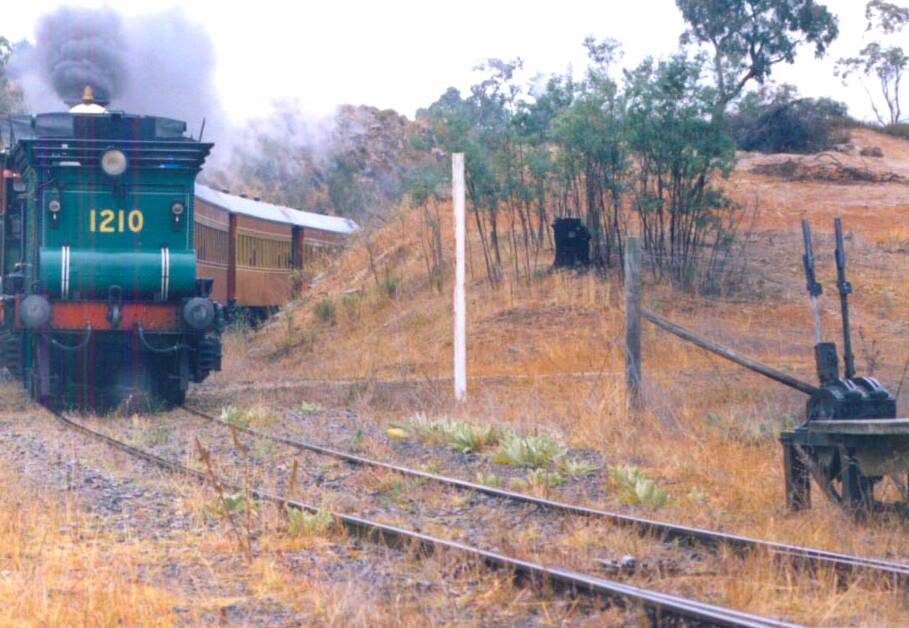
At the time, the railway line provided a big boost for local farmers who were able to take their wool clip from farms like Tuggeranong and Lanyon to the siding before it was transported to distant markets.
Earlier this week, I checked out the ghost railway with historian Jenny Horsfield from the Canberra Bushwalking Club who is hosting a walk there as part of this month's Canberra & Region Heritage Festival.
According to Jenny the aim of her walk is "to showcase an area relatively unspoilt and quite beautiful, not burnt for years, but also to get a sense of the enormous physical effort involved in building the line which was done prior to mechanisation".
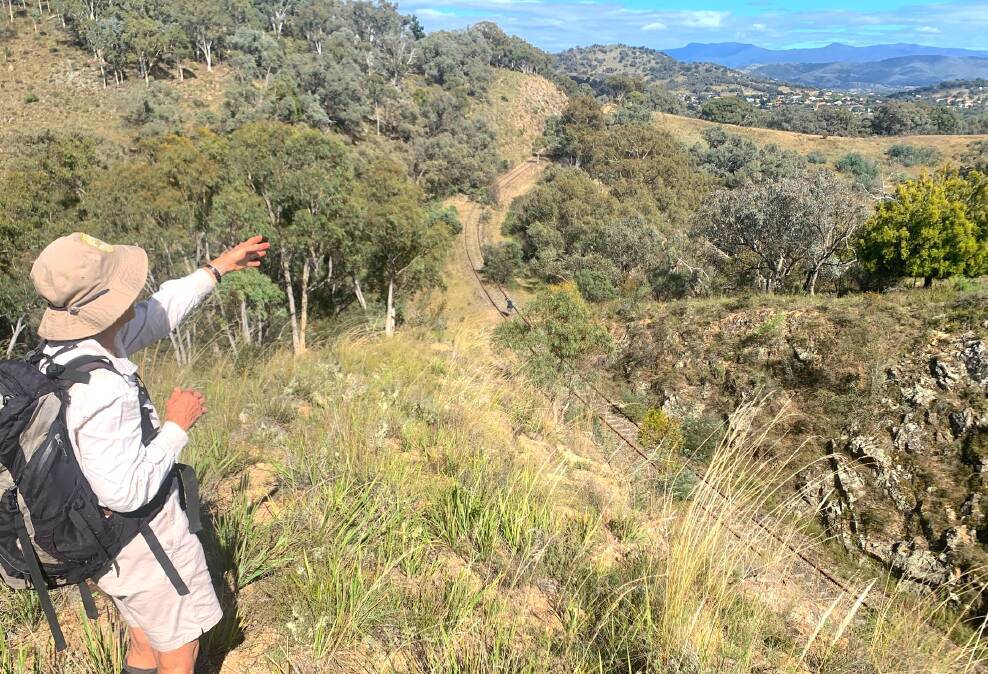
More than 400 men worked on the most difficult section of track, the Horseshoe Bend, in the hills to the east of historic Tuggeranong Homestead (in present-day Richardson). Thirteen cuttings, numerous embankments and culverts took the line up over an 800-foot crest before its descent to the Murrumbidgee Valley and on to Cooma.
Not surprisingly, accidents during construction were horrendous, mainly due to blasting in the cuttings and tunnels. At one stage in 1885, of 40 men admitted to Queanbeyan Hospital, all but four were patients injured by accidents on the line.
Today, near McAlister's Cutting (named after a pub which stood near the siding for many years) where many of these accidents occurred, are the reconstructed remnants of the Melrose Valley Railway Camp Cookhouse, now a memorial to those who worked on the line.
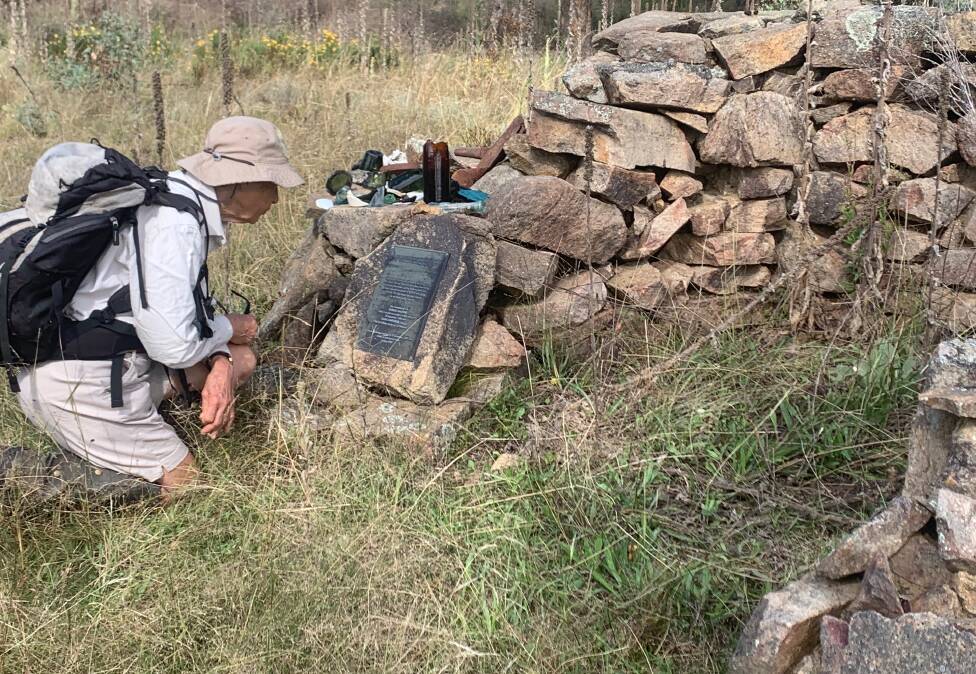
Sitting on the rebuilt fireplace are a hotch-potch collection of old bottles and artefacts that other walkers have found in the surrounding bush. Most are beer or wine bottles, but there is also a broken glass vase. "I can just see it now, a group of burly men sitting around the campfire, admiring a vase full of yellow everlasting daisies," laughs Jenny.
Also among the artefacts are a couple of broken porcelain insulators that were once attached to the telegraph line that ran alongside the track. These days most insulators are plastic.
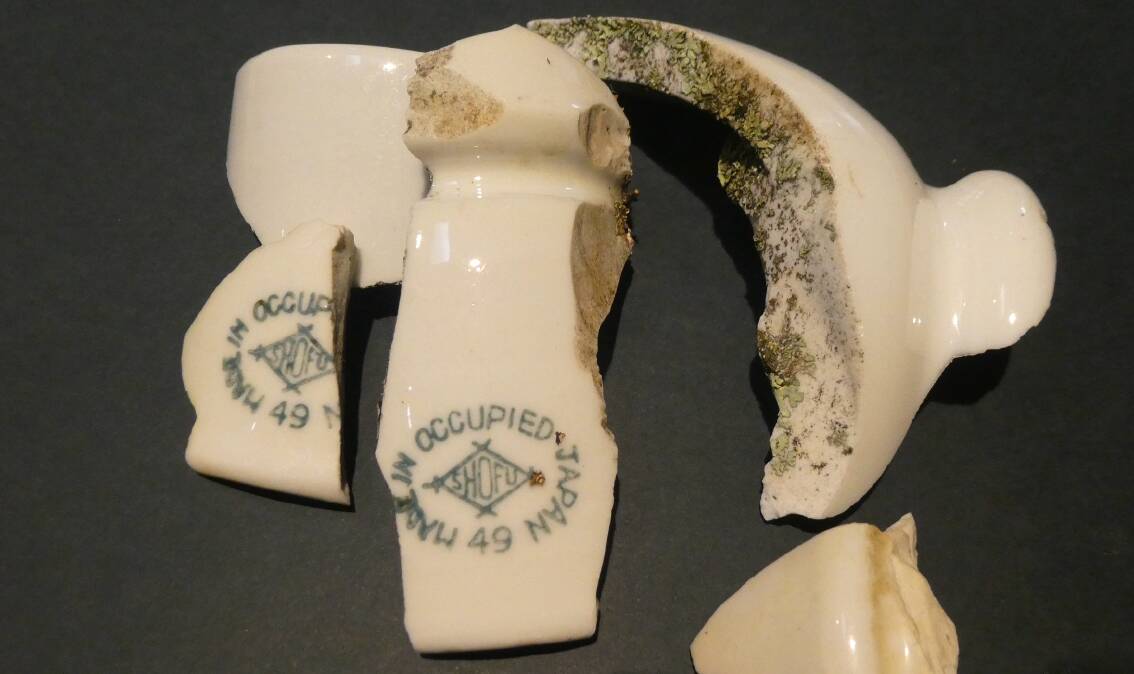
On a recent walk along this section of line, Michael Banyard and David and Meredith Hatherley noticed numerous broken shards of porcelain scattered along the edge of the track, including one porcelain insulator broken into several pieces with "SHOFU. Made in Occupied Japan 1949" stamped on it.
"Their find shows the connection between this line and that time in our relationship with Japan," explains Jenny.
In 1948 Australia signed a trade agreement with Japan allowing Australia to export wool and other agricultural products to Japan, and receive imports, worth over £5 million, of silk, rayon, cotton and - you guessed it - porcelain insulators. "The insulators were needed for Australia's post-war recovery, with the upgrading of railway systems and expansion of the electricity grid," says Jenny.
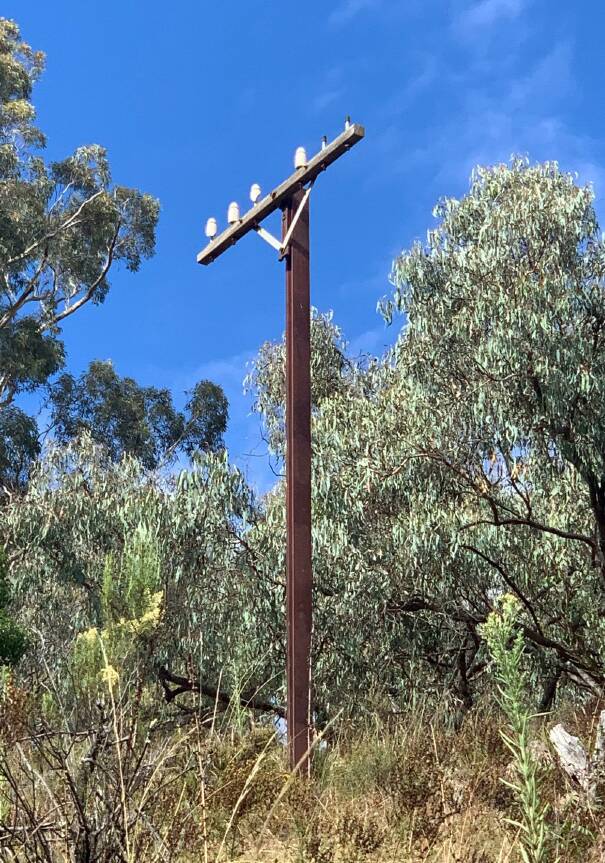
"Japan was known for its skilled manufacture of porcelain and the company, SHOFU, who had the contract, were - and still are - renowned manufacturers of all kinds of porcelain ware."
On the stone hearth is also a plaque which pays tribute to Patrick Galvins and Isaac Harrison, two men who lost their lives building the line
In 1886, an explosion at McAlister's Cutting killed Galvins and blinded his mate. According to Minders of Tuggeranong Homestead founding member Rebecca Lamb, "the survivor detailed at the inquest that the two-metre-deep hole had been bulled (enlarged at the bottom) to take the explosive which was being rammed with a copper tamping rod. It was a new form of explosive named Rack-a-Rock and the instructions stated it must be used with a wooden tamper".
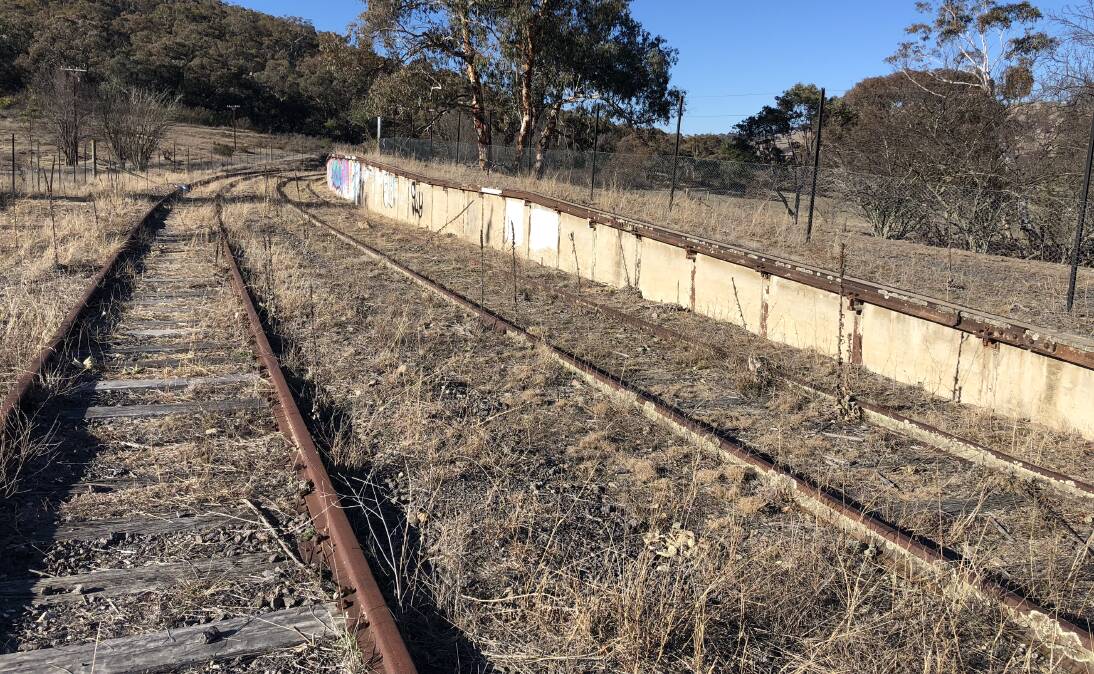
Meanwhile, Isaac Harrison was a ganger who was killed on the railway on February 23, 1910.The punishment book of Francis McGee, a teacher at the small school in Tuggeranong (now a museum), reports that two of his children, Bertie and Roland, received three strokes with the cane for "loitering on the way home from school" in March 1901.
"Four years later, in October 1905, Bertie was caned for 'throwing at and striking a boy in the school grounds with a dangerous missile; and 'for stubbornness'," reports Jenny, adding "and to think the children's mother died in August that year". One can only imagine how tough life was for those kids.
Another highlight of Jenny's walk is the vantage point from the eastern side of McAlister's Cutting which is just on the NSW side of the ACT border and from where you can gaze across to Mt Coree on our western border.
Truly a walk back in time.
Make sure you're on the right track
Autumn stroll: Jenny Horsfield's 'A walk back in time to the old Tuggeranong Railway' is on Saturday April 23 from 10am-1pm. Directions will be provided when booking, which is essential via 6231 4535 or horsfieldj796@gmail.com
Ghost platform: Jenny's guided walk doesn't visit the Tuggeranong Siding/Station, which is best accessed via a 30-minute walk following the Old Tuggeranong Road (where it meets the Monaro Highway) through and just beyond Tuggeranong Pines. The platform was formerly 80 metres long but later shortened to 27 metres with a waiting shed, a goods shed and yard to serve the local farming community.
Pyjama passenger: Dr Ralph Reader, who in the 1960s-80s lived at Melrose Valley Homestead adjacent to the Tuggeranong Siding, sometimes caught the Cooma-bound mail train when returning from Sydney. According to Rebecca Lamb, "He'd get on the train in his pyjamas, sleep all the way to Tuggeranong Siding where the pre-briefed guard would wake him at 4am. He'd then walk the short distance to his home in his pyjamas where he'd go straight to bed." How's that for personalised passenger service.
You can run, but you can't hide: According to Rebecca Lamb, "In 1886, John Owens, who lived near the Melrose Valley Homestead, was struck in the face by a 9-kilogram rock thrown by an explosion. He had set the explosive and had run 200 metres, but the rock had followed him. He suffered a broken jaw and lacerations. Heck.
Don't miss: As part of the Canberra & Region Heritage Festival, the 1880 Tuggeranong Schoolhouse, now a museum, is open from 10am until 4pm on Sunday April 10. Full of furniture and artefacts from the 19th and early 20th century, including the teacher's punishment book. 34 Enid Lorimer Cct, Chisholm. Entry by gold coin. More: Ph: 0400 391440 or burness@iinet.net
WHERE IN CANBERRA?
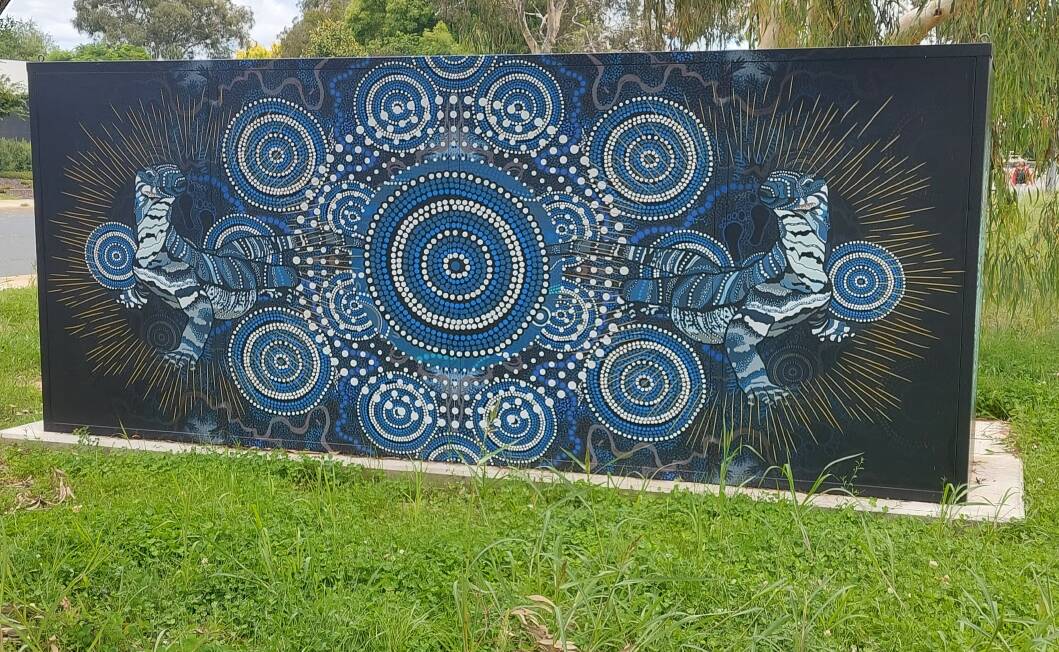
Rating: Medium
Cryptic clue: PM John, but which one?
How to enter: Email your guess along with your name and suburb to tym@iinet.net.au. The first correct email sent after 10am, Saturday April 9 wins a double pass to Dendy, the Home of Quality Cinema.

Last week: Congratulations to John Morland of Curtin who was first to correctly identify last week's photo as the formation ceremony of the No.18 (Netherland East Indies) Squadron - a joint Dutch-Australian air force unit established on April 4, 1942 at Hangar 48 at RAAF Base Fairbairn.
John just beat Toni Hogan of Bonython, Jordan Gannaway of Holder, and Brendan Haverfield of Sutton to the prize.
The squadron consisted of Dutch airmen who had fled from the then Netherlands East Indies (now Indonesia) following the invasion of the Japanese during World War II, as well as Australian personnel, under the command of the RAAF.
The Dutch airmen were made welcome in Canberra and regular readers may recall some of their daredevil antics, such as flying between the flagpoles at the Hyatt Hotel, that featured in this column in June 2020.
According to Frances McGee of Curtin, "The airmen were also honorary members of the swimming club at Manuka Pool (as were all servicemen in Canberra) and participated in club activities. In February 1944, some of the Dutch pilots flew Canberra swimmers, in Kittyhawks (a fighter plane), to Parkes for the Country Championships."
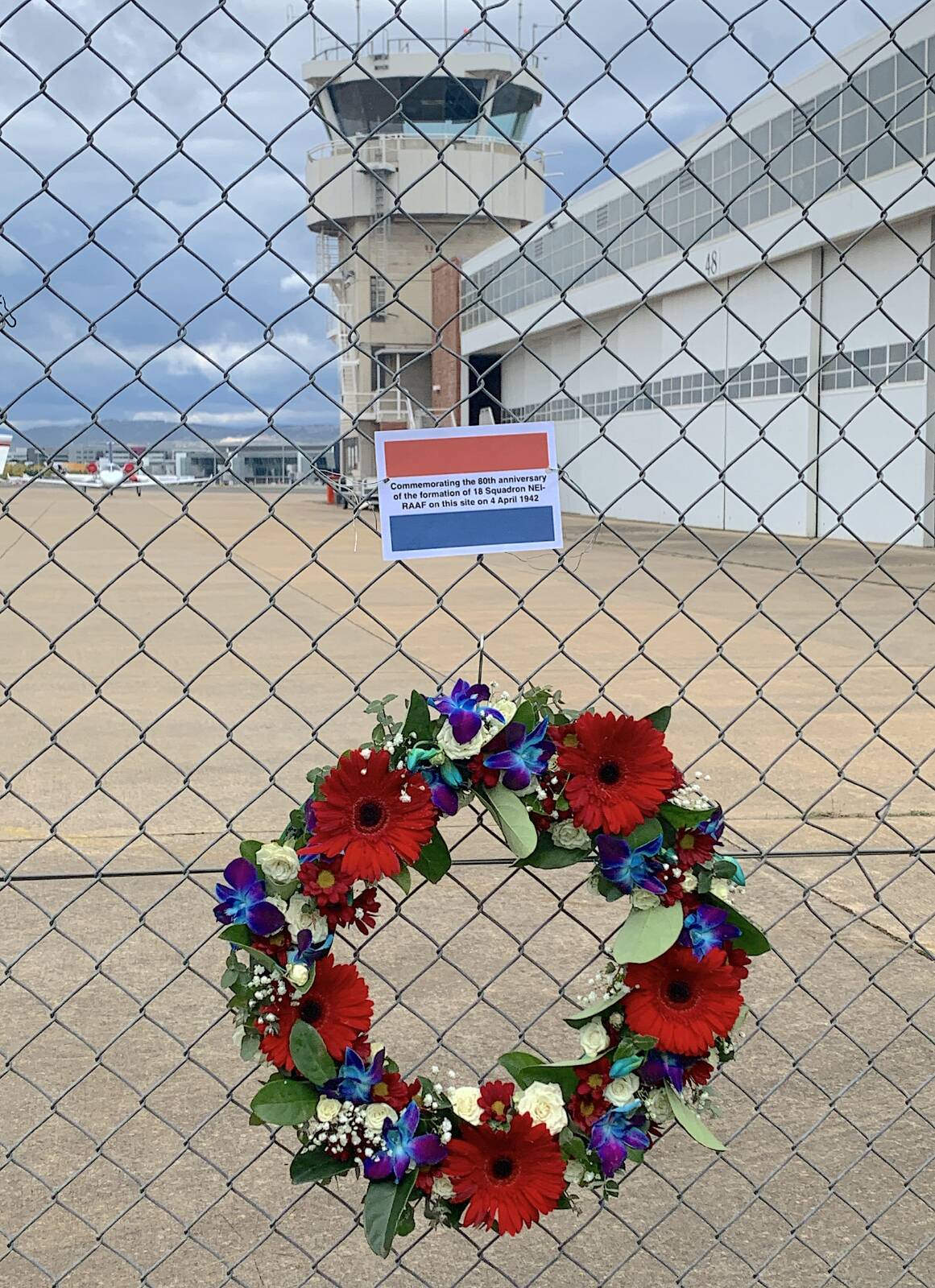
To mark the 80th anniversary, earlier this week, a simple but moving ceremony was conducted by Philip Barnaart of Curtin whose father, Willem Philip Barnaart, was a member of the squadron. Philip's family members, along with the Defence Attaché from the Dutch embassy and members of the Dutch Ex-Service Group, attended. 90 Dutchmen and 27 Australians from Squadron 18 were killed during the war.
Meanwhile, Chris Ellison of Casey, who 20 years ago worked in the adjoining hangar, recalls "at some time during the 18th Squadron's stay at the base, aircraft maintainers inadvertently fired the machine guns of an aircraft undergoing maintenance in the hangar through the hangar doors". David Foote of Fadden also asked about the same bullet holes. I wonder if they are still there. Someone must know.
CONTACT TIM: Email: tym@iinet.net.au or Twitter: @TimYowie or write c/- The Canberra Times, PO Box 186, Fyshwick, ACT, 2609







